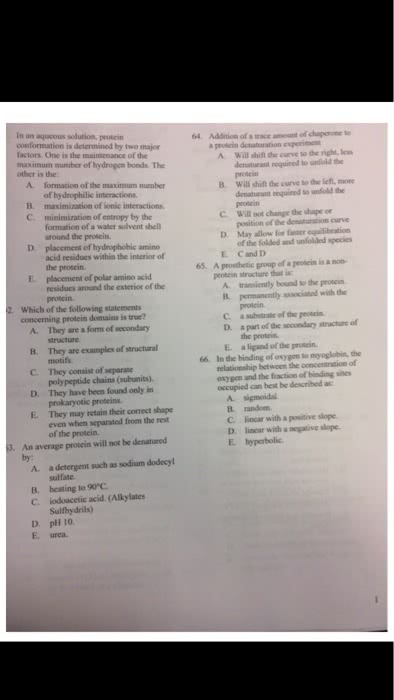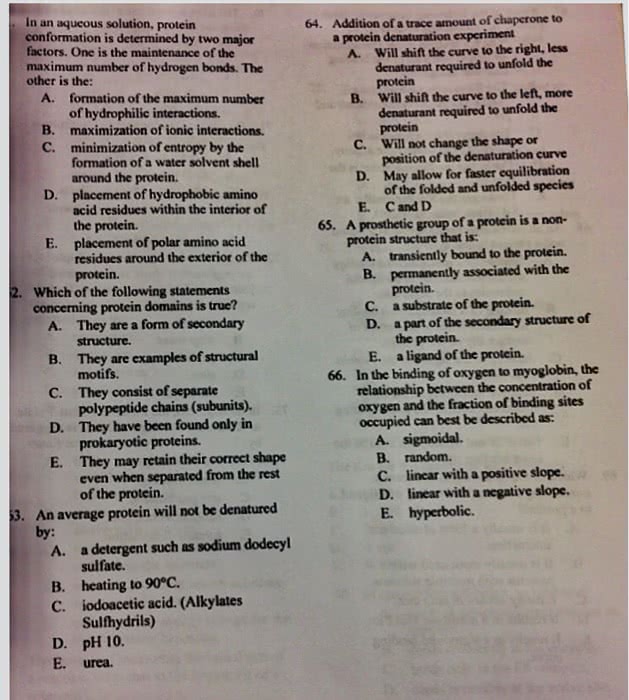BIOC2000 Study Guide - Final Guide: Protein Folding, Conformational Entropy, Alpha Helix

Sunday, 10 June, 2018
Rowland and kings protein folding
Protein folding
-Stability = ability to maintain native conformation
-unfolded protein have high degree of conformational entropy, protein maintain its
native conformation with interactions with water by forming hydrogen bonds,
disulphide bonds, hydrophobic effects and ionic interactions
-weak interactions are important for folding of polypeptide chains to secondary or
tertiary structures
-covalent disulfide bonds require a lot more of energy to break than weak interactions
-the protein with the lowest energy state means the most stable conformation, they
have the maximum number of weak interactions
-for every hydrogen bond form in a protein, a hydrogen bond with water is broken
-hydrophobic effects usually predominates in providing protein stability, water has a
higher order and decrease in entropy
-increase of entropy is the main driving force for hydrophobic side chains to cluster in
protein interior away from water, forming a hydrophobic core protein
-NCC is the backbone, amino acids are residues
-h bond NH hydrogen donor and CO hydrogen bond acceptor
-H in NH of CONH is partially positive and will donate electrons to the more electro
negative charge O
-O of CO in CONH is partially negative charged
-peptide bonds have double bond character which makes rotation not possible
-double bond nature makes molecules planar
-in most cases we have trans configuration creates a more stable system
-NC and CC is single bonded so they can rotate to form 3d structure
-more collision of L handed alpha helix higher energy level than
-h bond stabilise secondary structure 1,4 h bond (NH from C1 interact with CO from C4
-beta turn also stabilise by h bond and are found on surface of protein like R groups
-hydrophobic effect dictates tertiary structure of protein
1
Document Summary
Stability = ability to maintain native conformation. Unfolded protein have high degree of conformational entropy, protein maintain its native conformation with interactions with water by forming hydrogen bonds, disulphide bonds, hydrophobic effects and ionic interactions. Weak interactions are important for folding of polypeptide chains to secondary or tertiary structures. Covalent disul de bonds require a lot more of energy to break than weak interactions. The protein with the lowest energy state means the most stable conformation, they have the maximum number of weak interactions. For every hydrogen bond form in a protein, a hydrogen bond with water is broken. Hydrophobic effects usually predominates in providing protein stability, water has a higher order and decrease in entropy. Increase of entropy is the main driving force for hydrophobic side chains to cluster in protein interior away from water, forming a hydrophobic core protein. Ncc is the backbone, amino acids are residues. H bond nh hydrogen donor and co hydrogen bond acceptor.



